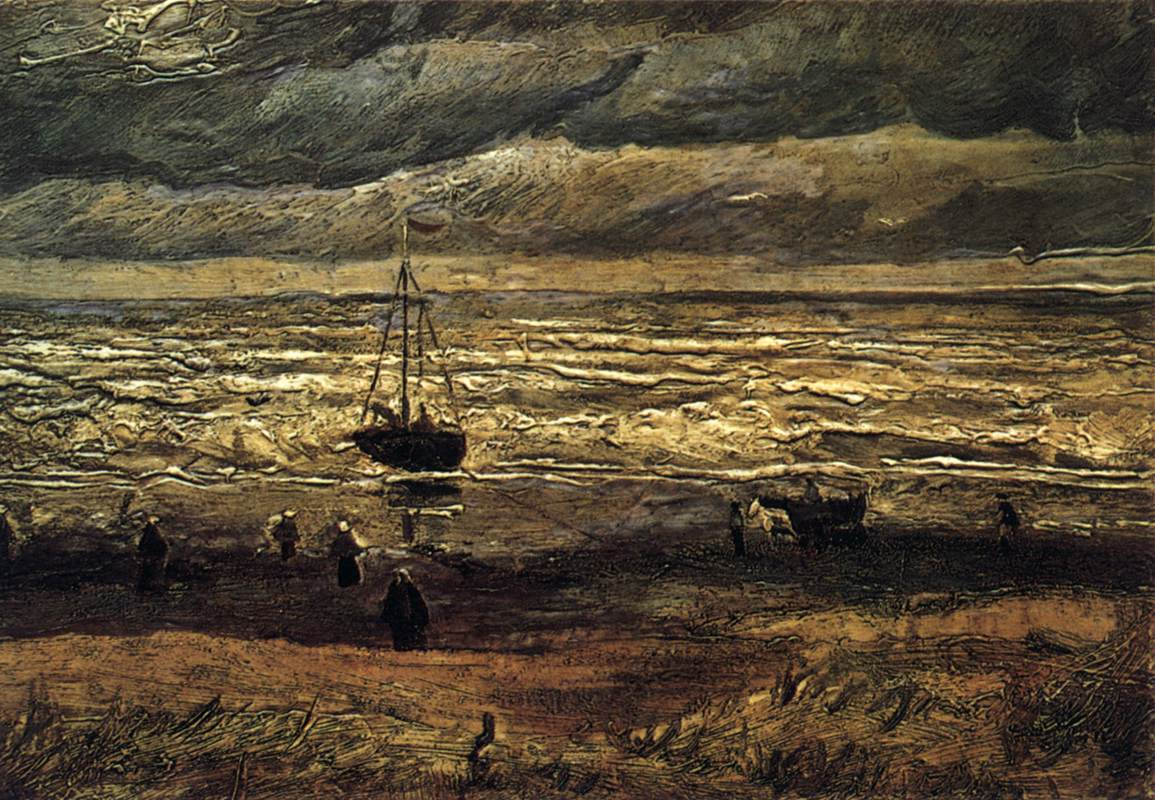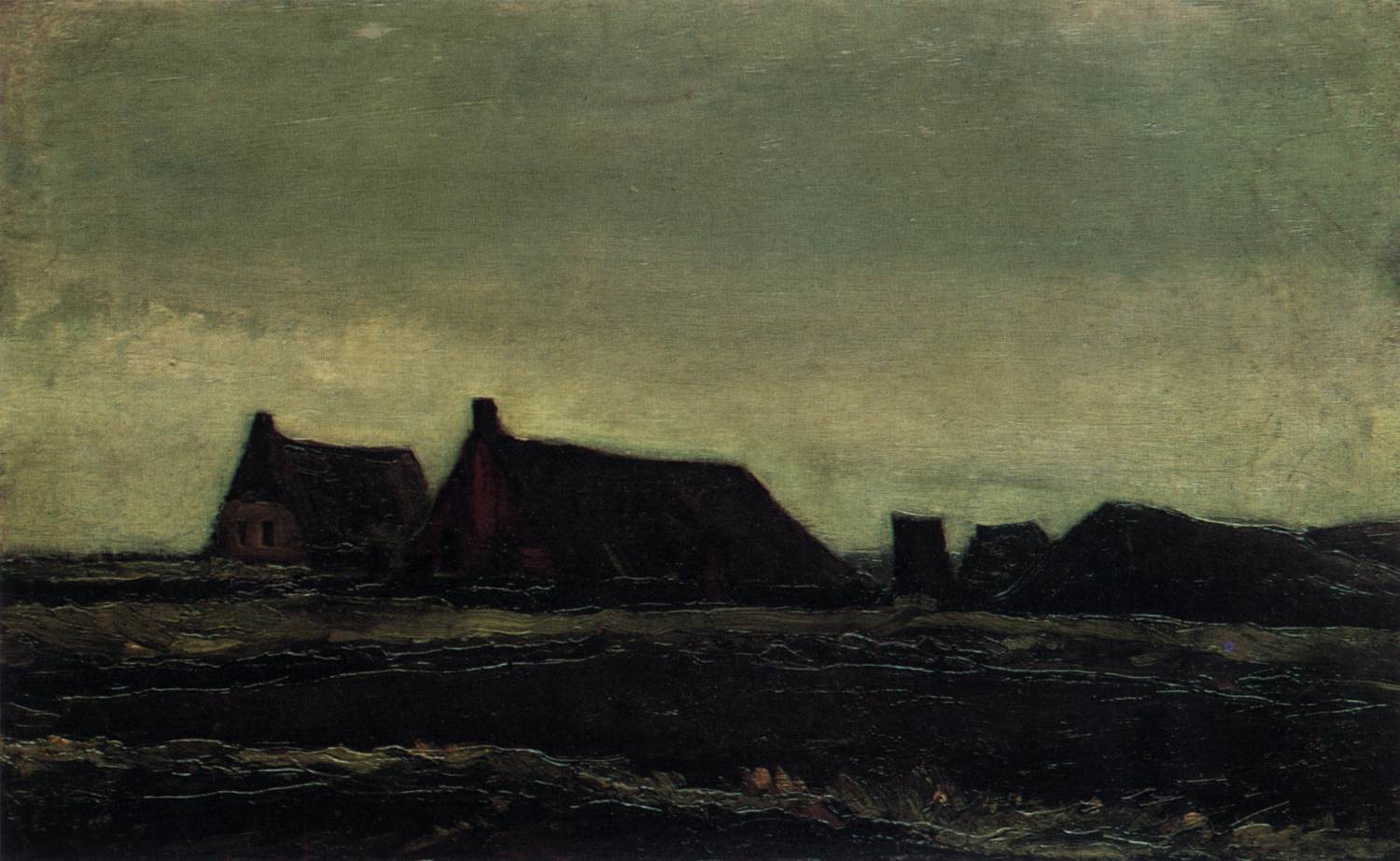Dutch painter and draftsman, born in Groot-Zundert, North Brabant, where his father was the Protestant pastor. His birthplace lay in the midst of flat country intersected by canals. He grew up in an old-fashioned country-house in the company of a number of younger brothers and sisters. His mother, with whom he had a great inward affinity, was named Anna-Cornelia Carbentus.
In 1869, through his uncle, an art dealer, he obtained a post as a salesman in The Hague offices of Goupil and Co., a firm of art dealers and printsellers. In 1873 he was transferred to a newly opened London branch of Goupil and Co. In London, he had opportunities for studying art, for seeing all kind of works. In 1875 he moved to Paris, to the head office of the firm. In Paris he saw a large exhibition of drawings and pastels by Millet.
In March 1876 he was dismissed from Goupil and Co, and returned to England to teach in a school for poor children in Ramsgate, and afterwards became an assistant at a church school outside London. He went up to London to see the galleries.
In 1877 he returned to The Netherlands and worked in a bookshop in Dordrecht. In May he went to Amsterdam and entered the University to study theology. In 1878 he find the academic studies in Greek and Hebrew too taxing and withdrew from the course. He moved to Brussels to train as an evangelist. In November he was sent to the mining district of the Borinage in southern Belgium. In 1879 he was dismissed from his probationary post and refused a full appointment on grounds of inadequacy as a preacher.
In the summer of 1880 he decided to become an artist and took up drawing with the financial assistance of his brother Theo, four years his junior. He studied the work of Millet, Daubigny and Rousseau by making copies. In October he moved to the art centre of Brussels and met Anthon van Rappard (1858-1892), a young Dutch artist.
In April 1881 he returned to Etten in Brabant and made drawings of local peasants. In August he visited The Hague and made contact with artists leaving there, especially a cousin, Anton Mauve (1838-1888). In December he settled in The Hague, working initially under Mauve's supervision.
In September 1883 he left The Hague and moved to the northern province of Drenthe, a popular place with artists of the Hague School. Here he took up painting seriously. In December he went to the new family home in Nuenen, Brabant. He painted here in dark, heavy colours which even at this time he was fond of contrasting and weighing against one another. The figures and land in these paintings were Dutch. In 1885 he painted The Potato-Eaters as a culmination of his studies of the local agricultural workers and weavers.
In November 1885 he moved to Antwerp where he was able to study works of Rubens and the Japanese artists. In March 1886 he traveled to Paris, where he lived with his brother. He entered the studio of Fernand Cormon (1845-1924). In the autumn he met John Russell, who introduced him to Impressionist techniques. Later he met other painters - Signac, Bernard and Gauguin. He worked in the streets, at Montmartre, in the environs of Paris, at Chatou, Bougival and Suresnes. He painted the little restaurants in the bright colours of spring, in bright blue and pink. He painted Père Tanguy in whose shop paintings by Pissarro, Cézanne, Renoir, Sisley, Seurat, Guillaumin and Signac were to be found.
Van Gogh remained in Paris for 20 months and profited from his stay. Under the influence of Impressionism his palette was liberated. But the frenetic life was too much for him; he wanted a place of light and warmth, and he did not want to be entirely financially dependent on Theo, so in February 1888 he left for Arles in southern France.
In Arles he took a room in a small hotel, which had a café beneath it. He painted and drew every day without a pause. He painted squares and streets of the town, the Alyscamps, the public gardens, the bridge, sunsets over Arles, fields with the railway in the background. He painted the blossoms of the fruit trees, gardens with gaily-coloured flowers, still-lifes. He painted also portraits - his own, time after time, the Berceuse, the Arlésienne, the Zouave, the peasants of the Camargue, the postman Roulin. He went to Les Saintes-Maries-de-la Mer and painted the sea and the boats. He rented a house, painted it yellow and adorned it with six pictures of sunflowers.
Gauguin, responding to his invitation, came to stay with van Gogh from October to December 1888, They spoke a great deal about art, Gauguin assuming a didactic tone which accentuated van Gogh's irritability. It appears that van Gogh threw a glass at his friend's head and another occasion threatened him with a razor. In a moment of mental derangement he cut off his own ear in the course of his first attack of dementia. Gauguin left Arles and van Gogh was taken to hospital where his disease took the form of hallucinations. He spent a few weeks in the hospital during which he created some beautiful pictures: several self-portraits, the garden of the hospital, the inner room with the stove.
In May 1889 he entered the sanatorium of Saint-Paul-de-Mausole at Saint-Rémy as a third-class voluntary patient. Here he continued to paint a number of pictures of everything which surrounded him: the house and the garden seen from all angles, landscapes seen from the open window, with cypresses and olive trees, more self-portraits, the doctor, the attendant. He created some of his maturest and most beautiful works, the copies made from reproductions after Rembrandt, Delacroix, Daumier and Millet.
In January 1890 an article on his work by Albert Aurier was published in the Mercure de France. He exhibited at the Belgian exhibition of Les Vingt, where he sold The Red Vineyard to Anna Boch.
The sojourn in Saint-Rémy became intolerable to him and he decided to go to Auvers-sur-Oise and place himself in the care of Dr. Gachet, a friend of Impressionist painters. In May 1890 he moved to Auvers, visiting Paris on the way.
Van Gogh's last three months were spent in Auvers near Pissarro, painting the sympathetic, eccentric Dr. Gachet and portraits of his daughters, as well as the Church of Auvers, agitated by a baroque rhythm with the church silhouetted against a cobalt sky. The blue of the Auvers period was not the fully saturated blue of Arles but a more mysterious, flickering blue.
Vincent's consciousness of his burden upon Theo, by then married and a father, increased. His work tempo was pushed to the limit; one of his last paintings, Wheat Field With Crows, projected ominous overtones of distress. On 27 July he shot himself in the stomach and died on 29 July in the arms of his brother. Theo died six months thereafter. They are buried side by side in the little churchyard of Auvers-sur-Oise.
Assessment
Van Gogh's life and work are legendary in the history of art, making him the quintessential misunderstood, tormented, even insane artist, who sold only one work in his lifetime but whose paintings achieved record auction sales prices after his death. His brief, turbulent, and tragic life is thought to epitomize the mad genius legend. His formal distortions and humanistic concerns made him a principal forerunner of 20th-century expressionism.
Van Gogh was active as an artist for only ten years, during which time he produced around 1.000 watercolours, drawings and sketches and nearly 1.250 paintings. His styles included an early dark, Realist style and a later colourful, intense, expressionistic style. Almost more than on his oeuvre, his fame has been based on the extensive, diary-like correspondence he maintained, in particular with his brother, Theo.
//
![]()









